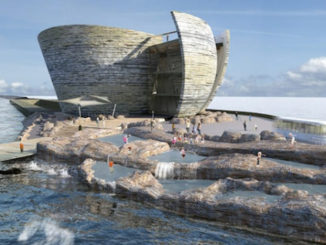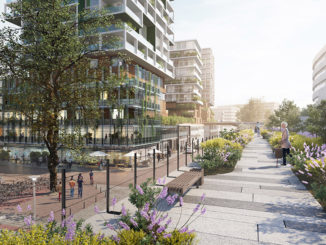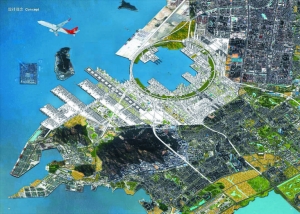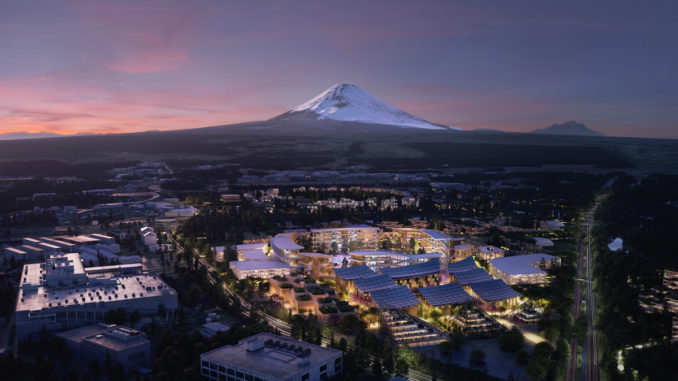
Toyota has become the largest automaker in the world through constant reinvention.
Started as a loom company in the 1890s, Toyota applied their ingenuity in mechanical engineering by pivoting to engines and then automobiles, going on to pioneer the path toward electric, hydrogen, and autonomous vehicles. In 2018, Mr. Akio Toyoda, CEO of Toyota Motor Company, announced that Toyota would transform yet again from being a car company, to becoming a mobility company. This has challenged the company to look beyond vehicles to examining how people move in all aspects of their everyday lives.
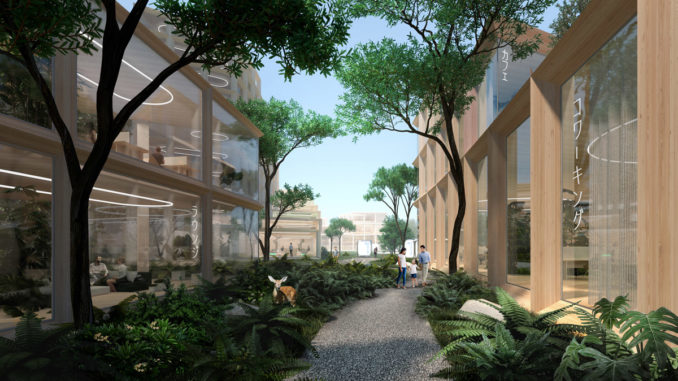
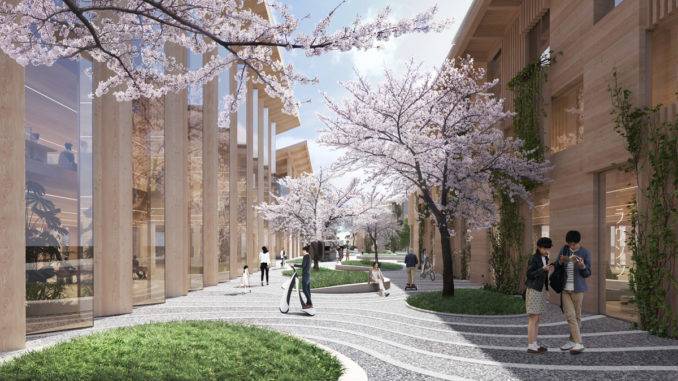
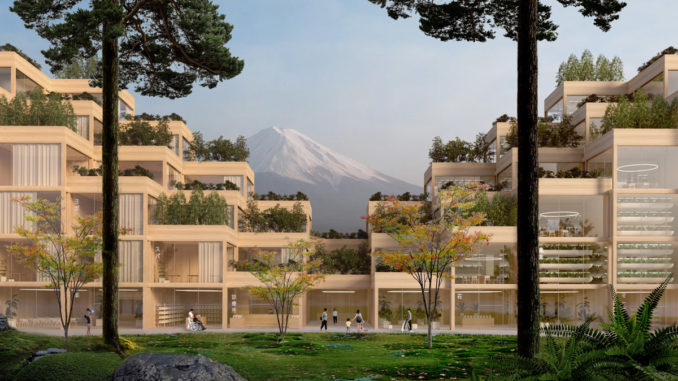
To accelerate the transformation and advance all aspects of mobility and beyond, a 70-hectare former factory site in Susono City at the foothills of Mt. Fuji in Japan, will be transformed into an urban incubator – Toyota Woven City.
Envisioned as a living laboratory to test and advance personal mobility, autonomy, mobility as a service, connectivity, hydrogen-powered infrastructure and industry collaboration, Toyota Woven City aims to bring people and communities together. Furthermore, in a country experiencing the highest aging population the world, and in a region that is especially symptomatic of that shift, Toyota Woven City will truly test the notion of Mobility for All.
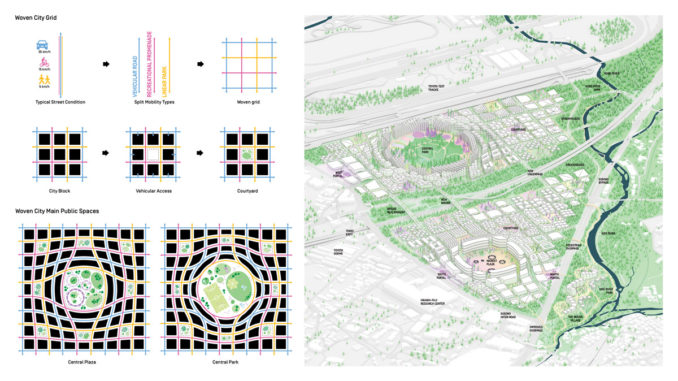
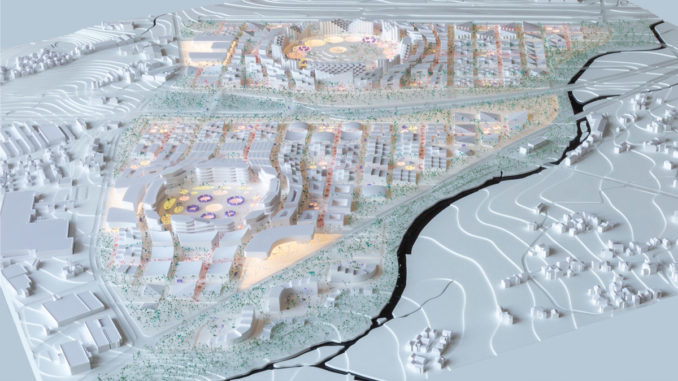
Mobility has historically been the primary sculptor of cities and their public realms – from pedestrian movement carving out medieval city streets, to horse carriages that have shaped Hausmann’s Paris or the Eixample of Barcelona, to the automobile which has come to dominate the public realm of most cities today. While streets today are simultaneously shared by personal vehicles, public transport, delivery vehicles, pedestrian sidewalks, bike lanes, and nature, when space is limited, cars have typically taken priority.
Toyota Woven City aims to create a New Equality – amongst vehicles, alternate forms of movement, people and nature – streamlined by the future promise of a connected, clean and shared mobility.
In Toyota Woven City, the typical road is split into three: a Street optimized for vehicular traffic with logistical traffic underneath, a Promenade for micro-mobility such as bikes, scooters, and personal mobility, and finally a Linear Park for pedestrians, flora, and fauna. These three strands form the DNA of the city, which are woven together to create a 3×3 city block module. Eight buildings comprise the block which frame a central courtyard accessible only via the Promenade and Linear Park. This framework is extended and replicated to form neighborhoods, and by distorting the grid, a courtyard is enlarged to create a large plaza or park that becomes an amenity at the city scale.
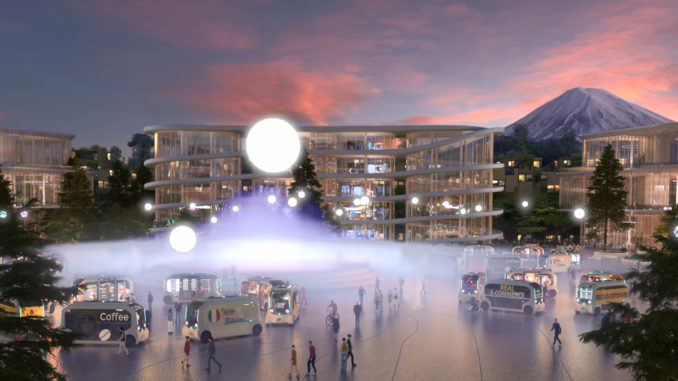
While Toyota Woven City will be built from the ground up, the transformation of roads could be applied to any of the great cities in the world, such as Tokyo, Barcelona or New York, simply by reprogramming the roads, creating a renewed balance between people, mobility, and nature.
Since the emergence of cities, trade and commerce have often been the focal point for public life. The last decade has seen the astronomic rise of e-commerce, putting the future of retail and street life in question. Furthermore, while the social network fosters virtual connectivity, it is at the expense of real human to human interaction. Toyota Woven City, together with Toyota’s e-Palette and the concept of mobility as a service, will act as a real-life testing platform for new forms of retail, dining, experiences and bringing people together in the public realm.
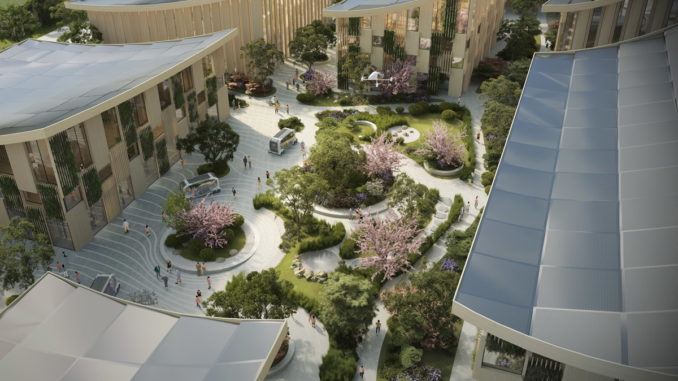
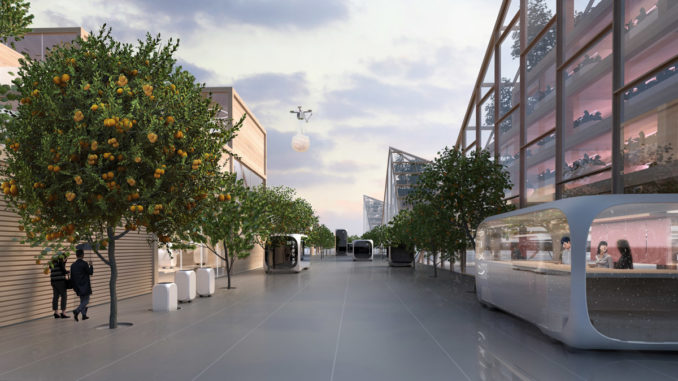
Toyota Woven City will utilize solar energy, geothermal energy, and hydrogen and fuel cell technology to strive towards a carbon neutral society. The below grade infrastructure will accommodate the utilities, including stormwater management, energy storage and a goods and trash delivery network, dubbed the ‘matternet.’ Utilities, delivery and mobility will all be connected and optimized through a ‘digital twin’ – a software platform that is a digital copy of the real world.
Toyota Woven City will host several mixed uses including housing, R&D, offices, commercial, academic, logistics, health & wellness amenities and agriculture. The architecture of Toyota Woven City will advance timber construction, a carbon-sequestering building material. Combining the rich and profound tradition of Japanese craftsmanship with robotic fabrication technology and modern construction innovation, we can both ensure that Japan’s deep building heritage lives on, while building sustainably and effectively into the future.
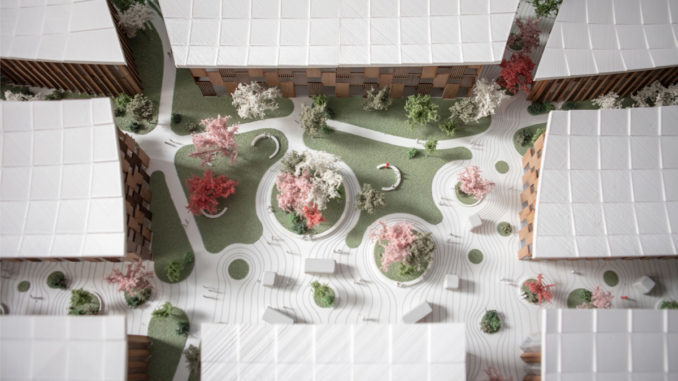
Like the way Silicon Valley improbably sprang up to become a leader of the digital world, Toyota Woven City has the potential to lead an example for how advances in mobility and technology will shape the physical world we live in.
Shortlisted Project in the Concept – Analysis & Planning category of the 2020 WLA Awards
Toyota Woven City
Location
Susono, Shizuoka Prefecture, Japan
Design Team
BIG Bjarke Ingels Group, Landscape & Urban design
Squint Opera, Animation
Mobility in Chain, Transportation Consultant
Aterlier 10, Sustainability Consultant
Client
Toyota Motor Corporation
Kaleidoscope Production

